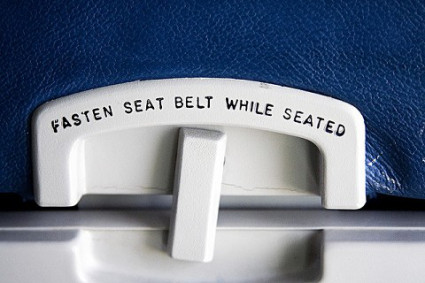Singaporeans count as one of the most avid jetsetters in the world. In 2016, close to eight million Singapore residents departed Singapore by air. In 2017 itself, 56 million passengers passed through Changi Airport. Be it for business or for leisure, it’s apparent that we’re taking to the skies much more than before!
This article is the first in our aviation law series: join our aviation lawyer in exploring legal issues in the fascinating world of air travel. From lost baggage and on-board injuries to being bumped off an overbooked flight and the use of frequent-flyer points, we explore your rights and obligations as a traveler, customer, and passenger.
Turbulence can hit anytime during a flight. In most instances, passing through a patch of turbulent weather causes nothing more than a brief period of seat-clutching discomfort – the aircraft rattles, rocks, and sways more than usual (and perhaps also a bit of inconvenience from having to be strapped into your seats or from not having your cup of hot beverage served to you).
On rarer occasions, turbulence can be more severe. In May 2013, a Singapore Airlines flight bound for Heathrow in London dropped several metres in turbulent weather, flinging food trolleys, coffee, and unbelted passengers onto the ceiling. Eleven passengers and one crew member suffered injuries. In October 2014, another Singapore Airlines flight from Changi to Mumbai experienced major turbulence, injuring eight passengers and 14 crew members.
Most commercial airlines endeavour to make flying as comfortable as possible for its passengers. Pilots tend to avoid flying through turbulence they know are present (on their radar or from communicating with air traffic control or other flights in the area). There are, however, certain types of turbulence that cannot be detected. When pilots find their planes traversing one of those, they turn on the belt-up sign and have you buckle up and sit tight. In fact, because turbulence can happen without warning, you are encouraged to strap up whenever you are seated, even when the seat-belt sign is not turned on.

While uncommon, passengers sustain injuries from serious turbulence mostly because they were not belted up. Like what happened to the London-bound Singapore Airlines flight, turbulent weather can cause an aircraft to suddenly and forcefully drop some distance. If you are not held down by your seatbelt, the immutable laws of physics will likely have you hit the cabin’s ceilings or the overhead compartments above. Nasty, but true. At times, passengers who have obediently belted up may still be struck and injured by falling baggage. Unfortunate, but possible. Even moderate turbulence may cause a standing or walking passenger to lose his or her footing and fall.
While modern air travel is by and large safe and seamless, one thought may flit through a passenger’s mind from time to time: if I were to be injured by turbulence on board an aircraft, can I seek compensation from the airline?
Under ordinary personal-injury law, you are entitled to compensation from the person who caused your injury only if you can prove that such person acted negligently. In other words, you must show that the person ought to have done or not done certain things to prevent your injury, but did not. So, for example, if you slipped and fell in a restaurant because of a large wet patch that went uncleaned for the past hour, the restaurant might be liable to compensate you (for being negligent in failing to clean up obvious hazards). If you slipped and fell on a perfectly dry floor, or because you were running or goofing around, it is unlikely the restaurant would be responsible for your injuries.
Injuries sustained on board international flights, however, are governed by a different regime. Major world countries (including Singapore) have signed and adopted an international treaty known as the Montreal Convention. Under this convention, the rule of thumb is that airlines must compensate passengers for all injuries or deaths (touch wood) arising out of an accident while on board an international flight.
An injured passenger does not need to prove that the airline or its staff (pilot, crew member etc) acted negligently. Put differently, there is no need to show that the pilot failed to turn on the seatbelt sign, or that he consciously and knowingly flew through turbulent weather etc. The claim system is straightforward: if some sort of inflight accident leads to a bodily injury, the airline becomes legally liable to compensate the sufferer of the injury.
There are, however, some caveats to this general rule.
First, the Montreal Convention applies only to journeys on international flights (all flights out of and into Singapore are international). If you find yourself injured on a domestic flight, obtaining compensation becomes trickier: depending on the laws of the country or state in which you are seeking compensation, you may likely have to show that the airline and its staff acted negligently in causing your injury before being entitled to compensation.
Second, even if the Montreal Convention applies (i.e. on an international flight), liability is imposed on the airline only if the injury in question arose out of an “accident” (citing the exact wording of the convention). The convention does not spell out what amounts to an accident, but courts around the world (when hearing and deciding air liability cases) have attempted to define the term. It is now generally accepted that an accident means an unusual or unexpected event that is external to the passenger. Turbulence qualifies as an accident. So do falling baggage, faulty seats, or stray trolleys. If, say, a passenger suffers an allergic reaction from a certain food served on the airline, liability is unlikely to be imposed on the airline because the injury suffered arose from a cause internal to the passenger (i.e. the passenger’s own condition).
Third, an airline may avoid liability by showing that a passenger became injured because of the passenger’s own negligence or wrongful conduct. This is specifically provided for by the Montreal Convention. If a passenger refuses to belt up (and insists on frolicking around the cabin) in a turbulence despite the seatbelt sign having been turn on, and despite cabin crew repeatedly warning the passenger to buckle up and sit tight, the airline may have ample grounds to reject a claim for any eventual injury. In this case, it is clear the passenger got injured because of his own stubbornness and willfulness. The airline may pay less, or altogether refuse to compensate at all.
Even when an airline accepts its liability to compensate, the compensation sum is not unlimited. The Montreal Convention stipulates an upper limit of approximately S$190,000.00 for compensation in relation to injury or death (this protects airlines from infinite liability).
In practice, the compensation amounts for in-flight injuries vary according to the extent of the injury, and are usually mutually agreed upon between the claimant and the airline. If an agreement cannot be reached, parties may go to court to have the matter litigated, but the straightforward compensation regime under the Montreal Convention has made such litigation rarer in recent times. Of course, airlines may, out of goodwill, offer compensation above the upper limit, especially in major air disasters that garner widespread public attention.
If you ever find yourself in the regrettable situation of having been injured on board an aircraft, you should most definitely reach out to the airline to discuss compensation.
Make notes of when (at what time) the incident happened, how the injury occurred, and what caused it. Take photographs using your smartphone, wherever possible. If there are fellow passengers who witnessed the incident, ask for their contact details (phone number, email etc) so that you or the airline may reach out to them for corroborating accounts, if need be. Needless to say, keep the invoices, receipts and medical documents that arise from the subsequent treatment you seek.
If your claim is reasonable, the airline will likely offer a commensurate level of compensation, either out of goodwill, or so that it remains in line with its obligations under the Montreal Convention. If not, or if the airline offers an amount that you think is unfair or insufficient, you can consider speaking to a lawyer who is familiar with aviation law. There is always the option of issuing a legal demand against the airline or taking the airline to court (though hopefully avoidable) in pursuit of compensation that is fairer and more equitable.
We’ll say, however, that prevention is way better than cure. The next time you take to the skies, strap up, follow instructions, and stay safe! We would, and so should you!
Advertisements Share this:




